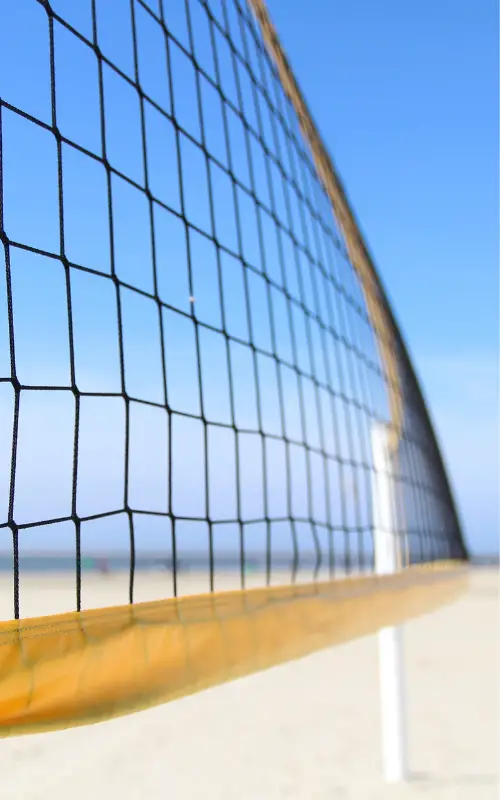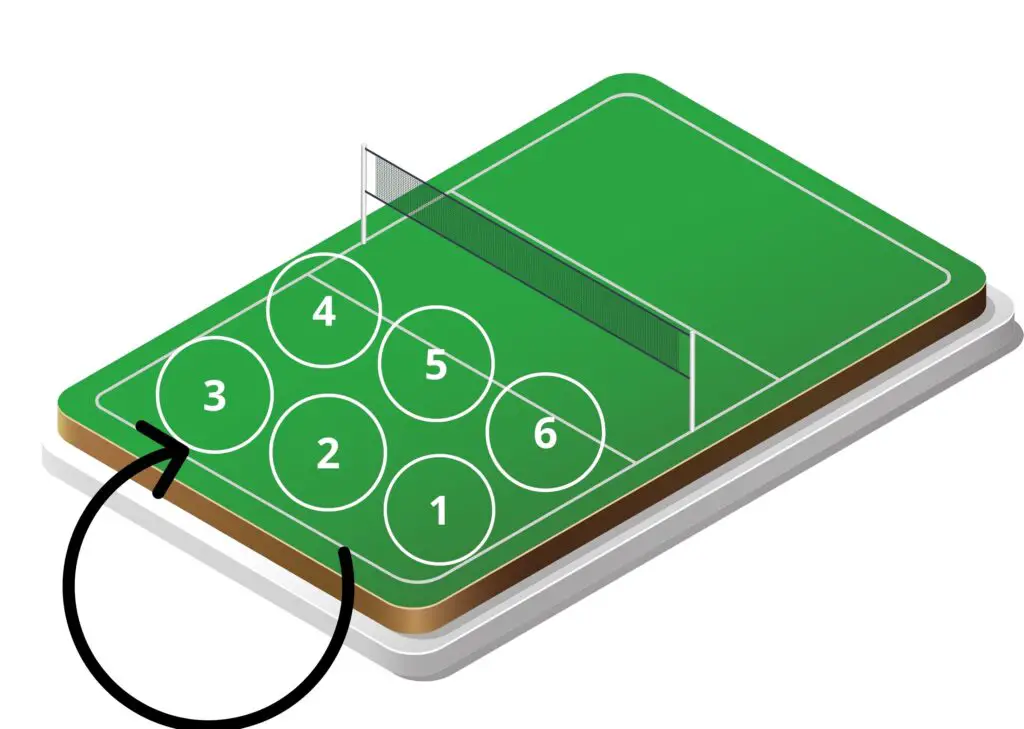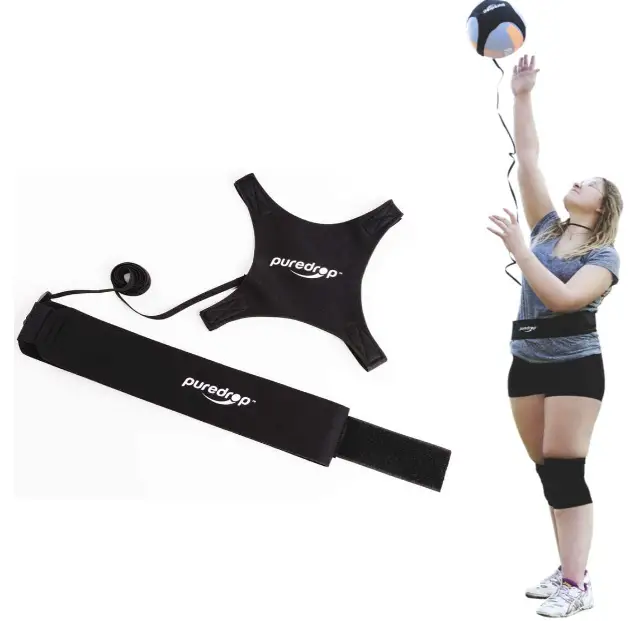Hitters are players that are attacking in volleyball. This means that they are pushing the ball over the net and trying to make sure that the ball lands on the floor inside the court of the other team. There are several types of hitters and their name is derived from the position that they have on the court.

The main terms that are being used are opposite hitter (or right-side hitter), outside hitter, and pin hitter. As you can see in the image below, they each have their own location on the court and there are often 2 hitters per team.
There are several strategies and the ones you see below are just an example, each coach uses their own system and places players in multiple locations during the match (as long as they stay in the rotation). Let’s dive into this further:
What is a pin hitter in volleyball?
A pin hitter is a hitter that is standing in the front row, just behind the net and close to the boundaries of the court. They are generally standing close to the left or right-hand side of the net. The word ‘pin’ refers to the antenna in the net.

Antennas are used to indicate the outer limits of the court. This makes sure that the referee can see if the ball is inside or outside the court when it is in the air. The antenna is colored in white and red stripes and sticks out of the net. Given that pin hitters are standing close to the antenna, they derive their name from this.
If needed, pin hitters can also come to the middle of the court to attack but in general, they are going to stand closer to the boundaries of the court. This allows them to perform unexpected attacks that are just inside the court of the other team.

The pin hitter has to be able to aim very precisely to do this. This can make it difficult for the other team to defend against as they might expect that the ball goes outside the court and just leave it as is, allowing the other team to score. Pin hitters are therefore often great at aiming the ball.
A pin hitter can be a right-side hitter or outside hitter. The term is mainly used to indicate that the boundaries of the court have to be defended as well as teams can focus on the inside of the court too much thereby neglecting the outer parts of the court.
If a coach notices this, he can ask the defense to pay more attention to the pin hitter. The players then know that they have to pay attention to the attacker(s) that is standing closest to the pins.

It is not allowed to hit the antennas (or pins) with the ball so the pin hitters are not literally allowed to touch the pins with the ball. It is also not allowed to touch the pins with your hands.
Therefore the term pin hitter might be somewhat misleading as you are not literally hitting the pin. It is just a contraction of the name of the attackers and then the location where they are standing on.
What is an opposite (or right side) hitter in volleyball?

The right side hitter (or opposite hitter) is standing on the right side of the court, just behind the net. This is where their name is derived from. It has to be noted that players rotate over the court so it is possible that they need to run before they get in their playing position.
It is quite easy to spike (or attack) from this position as you are standing very close to the net. The setter is going to give an assist and pass to the hitter. This person has to find a weak spot in the defense and send the ball that way.

There are two main ways in which an opposite hitter attacks: a spike and a tip. A spike is a hardball over the net which is aimed at the floor. Attackers can use a lot of power and make it hard for the defenders to retrieve the ball. A spike on the other hand is giving the ball a soft nudge and just pushing it over the net. This can be unexpected for the defenders and they might miss the ball.
Let’s take a look at how a tip works, explained by Olympic medal winner Jordan Larson:
Other players can attack as well but it is generally the hitters that are going to do this as they are specialized in it. To add more diversity to the attack, it can be decided that they are not going to attack and let someone else on the team do it. This can make it harder for the defenders to know what is going to happen.
Opposite hitters are often among the taller players on a team as being able to hit the ball high can add more power to it and players can drop it closer behind the net, making it harder to retrieve the ball. They jump when they attack to go even higher.
What is an outside (of left side) hitter in volleyball?

Outside hitters are standing on the left side. It has to be noted that they are generally standing behind the net but some coaches can opt to make them stand in the last row to make the attacks more unpredictable.
This also makes it easier to rotate as there is always an attacker in the front row, so there is less need to run across the court.

Therefore newer teams often let the outside hitter stand in the last row. This makes it harder for the outside hitter to score though so each system has its advantages and disadvantages. The outside hitter can come closer to the setter to compensate for this.
Left side hitters are generally left-hand-sided and generally use their left arm to attack. Given that most players are right-hand side, this creates less competition for this position.
In some instances, the team can select a right-handed person for this position as well if they feel that this is the best option.
A famous left-sided hitter is Jordan Larson. Let’s take a look at some of her highlights:
In beach volleyball both players have to attack so the term outside hitter is not used.
If a team wants to focus more on defense (for example if they are winning by a large number of points), it is possible to remove a hitter from the court and replace this with another player. This makes the team less balanced and makes them focus on one part of the game. This won’t happen too often as you need to attack and defend in volleyball at the same time.
Become a better hitter with the Puredrop volleyball trainer (more information HERE).

To conclude, we can say that there are generally two hitters on the court. During an attack, they generally stand on the left side and the right side of the front row. This gives the setter options when they want to prepare the attack.
